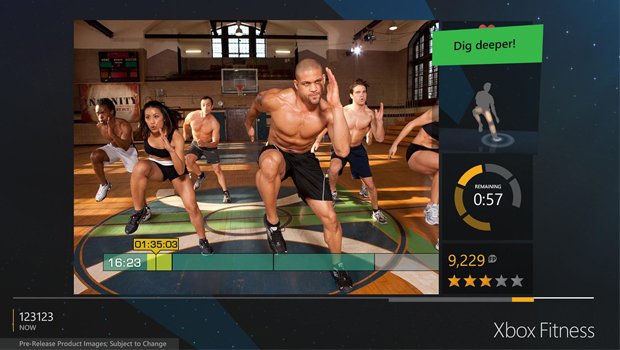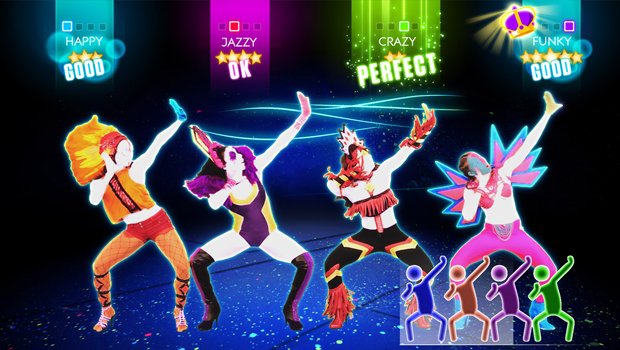The real potential of the next generation is in its workout games

“Move right into the center there,” the Xbox Fitness rep instructed me. I was demoing their game at a preview event for all Xbox One launch titles, “Good, now stand still.”
A few seconds passed. The TV screen lit up, my heart rate was 80 beats per minute.
What.
Witchcraft? Sorcery? How in the hell did they get my heart rate from the Kinect? I looked around in shock as the Xbox Fitness rep laughed and explained. Every time your heart beats, your sinuses expand minutely. The Kinect reads the frequency and intensity of this differential and determines your heart rate from it. I looked at the Kinect with narrowed eyes, it was not what I once knew it to be. Not one week ago my 360 Kinect had signed in my AC repairman as me while I was in the other room, and now here was its progeny reading my heart rate from pressure differentials in my face? No, I could not handle it.
But in that moment I realized: the capacity for next gen gaming wasn't shown in its launch title graphics or controls of its multimedia capabilities. The capacity for next gen gaming was evident in its fitness games. Because they’re doing some crazy shit and nobody is noticing how awesome it is, or how it could be used for literally anything else. Think about this: a horror game like Outlast or Amnesia that scales off your heart rate. The more terrified you get, the darker the environment gets and faster the monsters become. Or, when you take your hand off the controller you character is forced to stand up out of cover. Or when you look away from the screen the screeches and moans of the dead raise in volume. It’s all terrifying and it all came to me as I was watching the Xbox Fitness Rep cheerily walk me through the demo. I was a dead man standing because I would never play that horror game and in fact would pass away from fear if I had to. But my god it would be the most compelling thing ever. It then became my mission to attend every Kinect and fitness game at the event and see what they had to offer. I had never heard of this heart rate stuff, and if that was the case what other surprises were in store for me?

It turns out many surprises. Over at Just Dance 2014 I saw that the Kinect can differential two different people to impressive degrees, even when one’s directly behind the other and even when they’re hugging. That’s right, I was smushed up against another human and the Kinect still knew where I was and what I was doing. The days of standing and slowly moving your arms seem to be on the way out. I was on my back, on my butt, in the air, spinning around, and this new Kinect handled it all.
Also the physics models created on the new Kinect are ridiculous. When I was doing squats with Shawn T from Insanity, on the right of the screen was a silhouette of myself with areas of my body lighting up. What was lighting up? Oh, just the current muscles groups that were activated by my movement. When my squatting technique was awful (shocking), the Kinect knew it and used the physics model it was generating of my to suggest corrections. Ok so the new Kinect can read your activated muscle groups and create a digital, moldable representation of you. Casual, that’s fine. Think about this for an option for a character creator: the game scans a model of your face, and then by applying pressure and pulling your own face you can adjust what the character looks like on screen. Want an elf? Pull your years out. What an older version of you? Knead your cheek fat until it’s lower on your face, pull down on the corners of your eyes, push on your nose to enlarge it and furrow your eyebrows. Done.
Sign up to the GamesRadar+ Newsletter
Weekly digests, tales from the communities you love, and more

I was Irish Stepdancing with Zumba, revving my jet ski while sitting down with Kinect Sports Rivals, singing with Just Dance 4, and every time I encountered a new feature with the Kinect I thought, “Man this would be amazing with X.” We’re on a logarithmic curve with graphics, flattening out on improvement as we progress through the generations. The stuff that comes out of left field, the heart rate measurements, those are going to be the game changers.
Zach was once an Associate Editor for Future, but has since moved into games development. He's worked at EA and Sledgehammer Games, but is now Narrative Director on League of Legends and Valorant at Riot Games.


